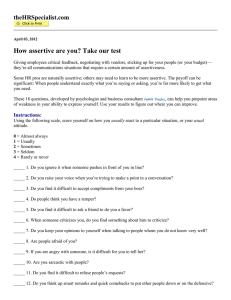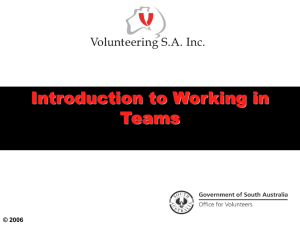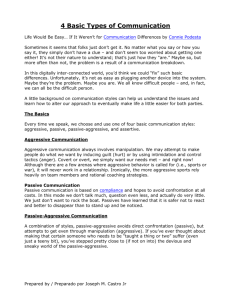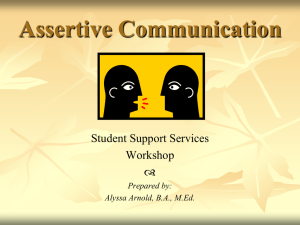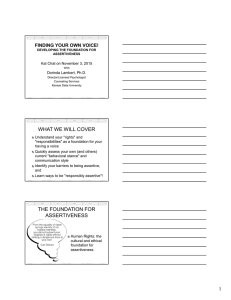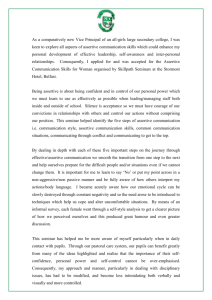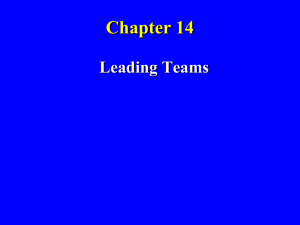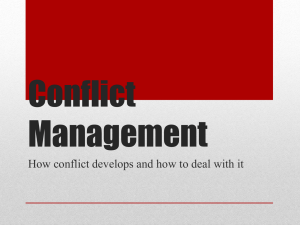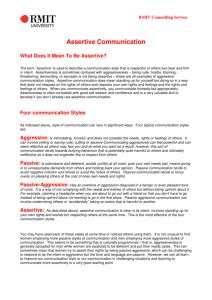Problem solving styles and persuasion
advertisement
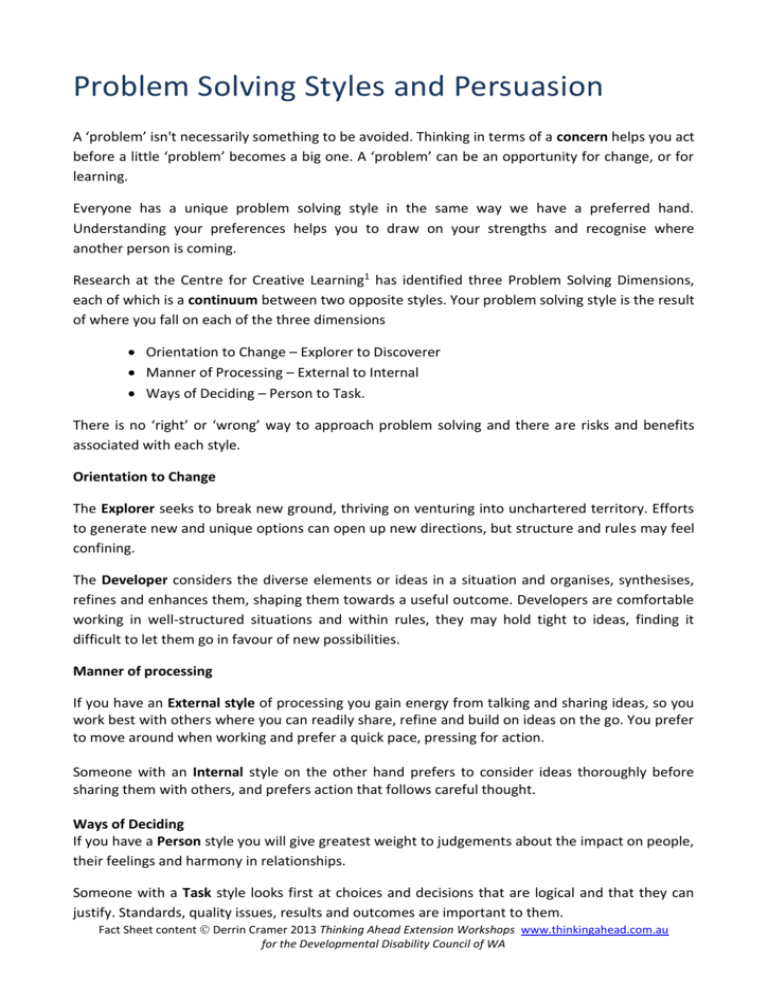
Problem Solving Styles and Persuasion A ‘problem’ isn't necessarily something to be avoided. Thinking in terms of a concern helps you act before a little ‘problem’ becomes a big one. A ‘problem’ can be an opportunity for change, or for learning. Everyone has a unique problem solving style in the same way we have a preferred hand. Understanding your preferences helps you to draw on your strengths and recognise where another person is coming. Research at the Centre for Creative Learning1 has identified three Problem Solving Dimensions, each of which is a continuum between two opposite styles. Your problem solving style is the result of where you fall on each of the three dimensions Orientation to Change – Explorer to Discoverer Manner of Processing – External to Internal Ways of Deciding – Person to Task. There is no ‘right’ or ‘wrong’ way to approach problem solving and there are risks and benefits associated with each style. Orientation to Change The Explorer seeks to break new ground, thriving on venturing into unchartered territory. Efforts to generate new and unique options can open up new directions, but structure and rules may feel confining. The Developer considers the diverse elements or ideas in a situation and organises, synthesises, refines and enhances them, shaping them towards a useful outcome. Developers are comfortable working in well-structured situations and within rules, they may hold tight to ideas, finding it difficult to let them go in favour of new possibilities. Manner of processing If you have an External style of processing you gain energy from talking and sharing ideas, so you work best with others where you can readily share, refine and build on ideas on the go. You prefer to move around when working and prefer a quick pace, pressing for action. Someone with an Internal style on the other hand prefers to consider ideas thoroughly before sharing them with others, and prefers action that follows careful thought. Ways of Deciding If you have a Person style you will give greatest weight to judgements about the impact on people, their feelings and harmony in relationships. Someone with a Task style looks first at choices and decisions that are logical and that they can justify. Standards, quality issues, results and outcomes are important to them. Fact Sheet content Derrin Cramer 2013 Thinking Ahead Extension Workshops www.thinkingahead.com.au for the Developmental Disability Council of WA Being Assertive Being proactive requires a degree of assertiveness. This does not mean being pushy and insistent. It does mean communicating directly, in a thoughtful way that takes into account the needs and feelings of others. Assertiveness has both short and long term advantages. You are more likely to build respect, maintain a good relationship and get the results you want if this is your primary mode of communication. An assertive person: Speaks clearly and without guilt Is self-confident Is well informed and well prepared for meetings Communicates effectively Keeps good records Is positive and strong Persists You are not being assertive if you beat around the bush, feel guilty for speaking up, apologise, agree just to keep the peace, act too hastily or leave it all to others. Being passive might avoid unpleasantness in the short term but ultimately it leads to frustration, disappointment or anger and does not achieve your goals. Effective Communication The way you communicate will have a big impact on your success. Different situations will require different approaches, however, whether communication is face to face, via letter or email, the same basic rules apply. Keep calm and avoid being too emotional Be assertive, taking into account the needs and feelings of others. Use a friendly tone, be respectful. Avoid the blame game at all costs, and be aware that blame could be hidden in what you say. Be as specific as possible. Refer to behaviours but avoid referring to personal characteristics or personalities. Remember to listen, communication is a two-way process Choose the time for the meeting carefully. Choose a time that suits you as well as the teacher. Practice what you want to say, make sure you are convinced. Then take on the role of Devil’s Advocate and consider arguments that might be put forward. Prepare how you will counter those. Fact Sheet content Derrin Cramer 2013 Thinking Ahead Extension Workshops www.thinkingahead.com.au for the Developmental Disability Council of WA Instead of saying: Try saying: This is how it should be I would like, or I want… You make me feel…………… When you did…… I felt…. You don’t understand Let me explain You’re wrong! Permit me to clarify Use the Research about Persuasion ‘Let’s look at it this way’ Word your point so that it leads people to think about the issues in a way that is advantageous to you. Be aware though that negative information often has a more powerful influence than positive messages so use it carefully. Use anecdotes to tell your child’s story where you can. Less is more Research has shown that the more reasons someone is asked to think of in support of an idea, the less value each of those ideas has. This means asking someone to come up with all the reasons why something is a good idea could backfire. On the other hand, if the school is not very receptive, ask them to come up with as many reasons as they can in support of their position and they may not appear to be such a barrier after all. Style matters as much as substance How you say it matters as much as what you say. Using hesitant phrases including: ‘I mean’, ‘you know’ or ‘ummmm’ too often, will reduce the power and credibility of what you have to say and you will be seen as less convincing. Tap the Emotional Connection We need to feel that something is relevant to us or affects us or someone important to us in order to be convinced. If you can find a way to engage the teacher’s emotions, you will be a more effective advocate. Once you have aroused the their emotions you need to emphasise what is not working in the current situation and offer them a way to remedy the situation for the message to be most persuasive. Agree with them first Nothing makes us feel better than someone telling us we are right. Be prepared to let the other person know that you respect their opinion and reassure them that what you are asking will benefit both parties. You are aiming for a win-win situation so pointing out how it will benefit them is a step in the right direction. 1 If you would like to read a little more about Problem Solving Styles developed at the Centre for Creative Learning, you will find some information at www.creativelearning.com/problem-solving-styles/about-problem-solving-styles Fact Sheet content Derrin Cramer 2013 Thinking Ahead Extension Workshops www.thinkingahead.com.au for the Developmental Disability Council of WA
